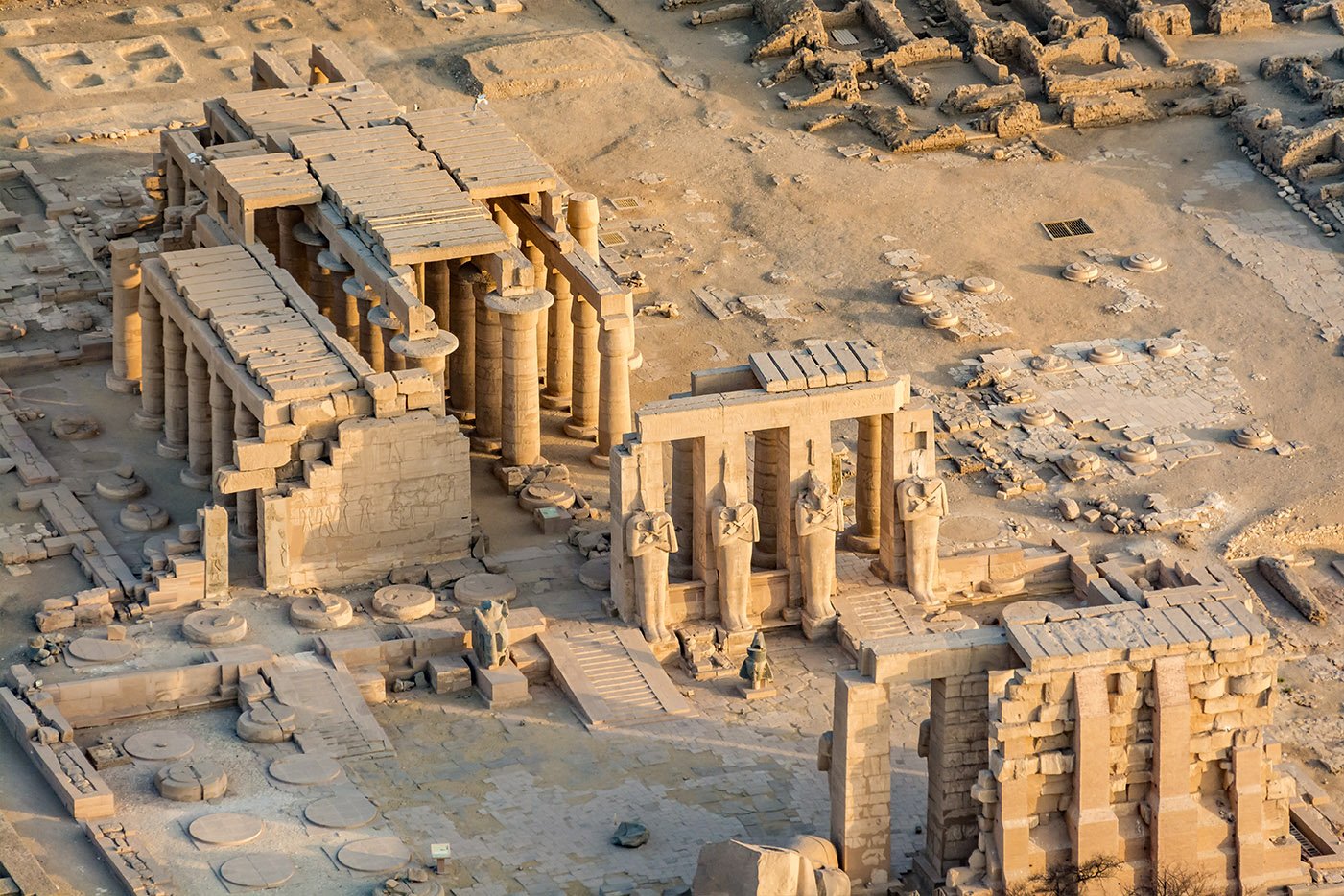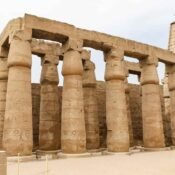
Ramesseum Temple in Luxor
Ramesseum Temple is one of the most spectacular temples on the Nile’s West Bank in Luxor, only a few exist now. Several groupings of columns and damaged statues stand in a broad expanse of hills, pits, broken foundations, and statue rubble marking the location of the rest of the complex. Today, the reputation of this site is more directly linked to the reputation of the individual who commissioned it than to its appearance.
Who did Build Ramesseum temple?
Ramesses II is usually connected with numerous monuments in and around Luxor and further south. He was also a prolific builder who liked to increase his image by recycling existing monuments.
He was the greatest conqueror in Egyptian history, reigning for 67 years during the New Kingdom (1279 BC-1213 BC) and expanding the kingdom’s borders into southern, western, and northern Syria.
Natural disasters and eventually early Egyptian Christians using Ramesseum Temple as a church took a toll on this once-magnificent structure, although evidence of its grandeur can still be found today. His temple was dedicated to him and was to be the largest of all monuments, as a testament to his power and influence. amidst the dispersed wreckage.
The collapsed Colossus of Ramesses II is still visible there in ruins. This sculpture, which is nearly six floors tall, is one of his largest attempts worldwide and the largest freestanding sculpture in Egypt. Additionally striking is the decoration on the remaining columns in the Hypostyle Hall, which highlights the high level of craftsmanship used in the Ramesseum’s construction.
Even though there isn’t much left, the Ramesseum is a fascinating destination to see, especially for those curious about Ramesses II, the greatest of the pharaohs. The beautifully preserved Ramesses III temple complex at Medina Habo temple took design cues from this structure.
Recent Posts
Luxor day tour: Most Illuminated Temples
Discover Luxury Nile Cruises
Designing the Perfect Itinerary for Your Nile Cruise




